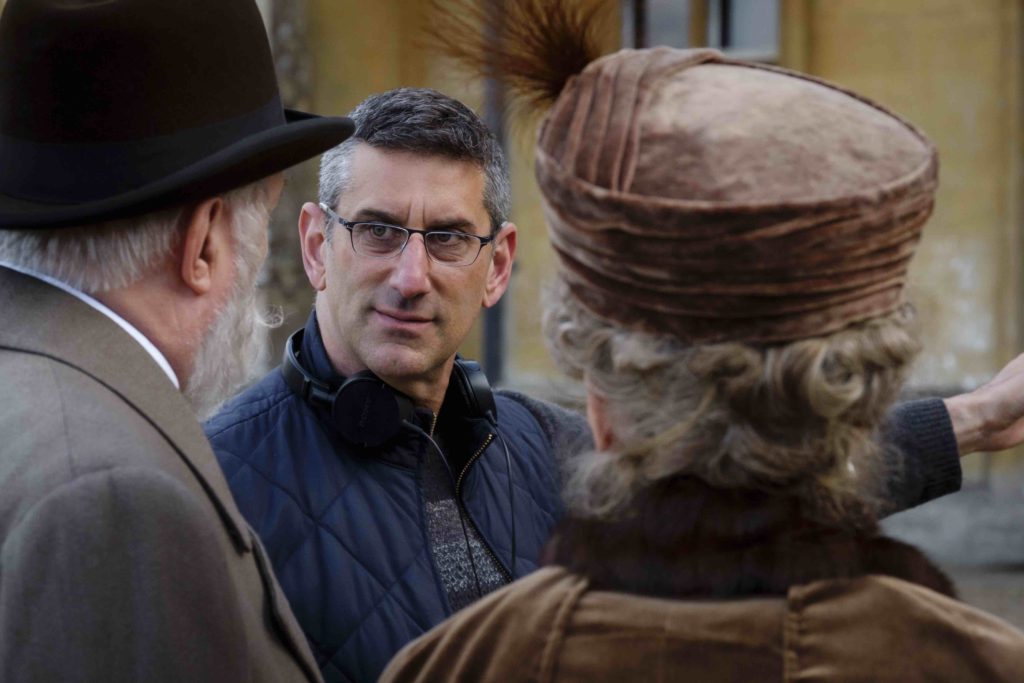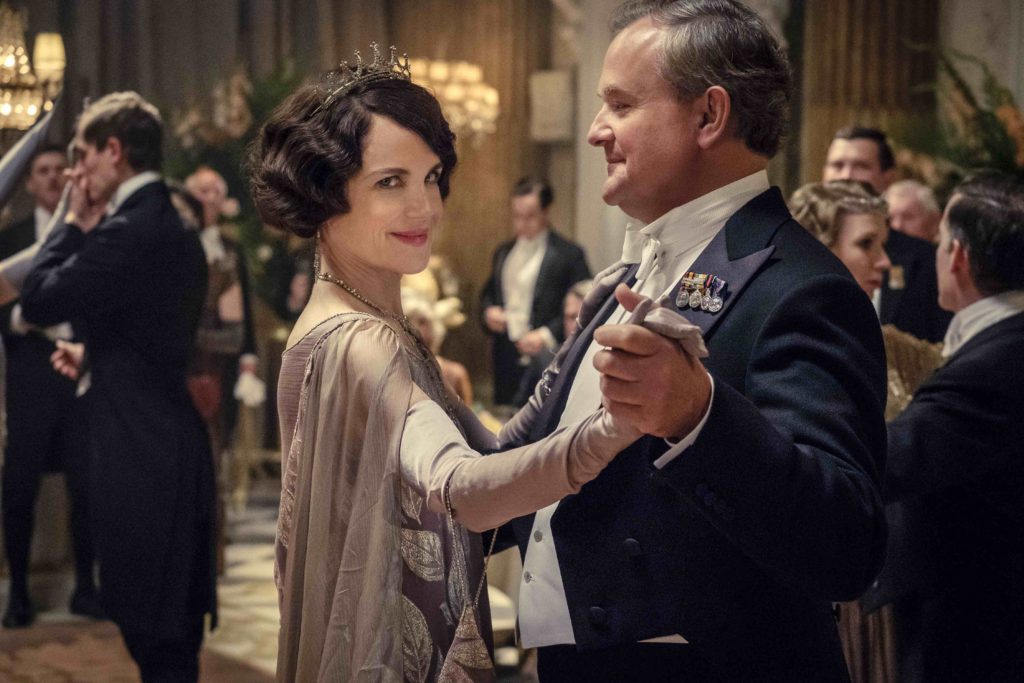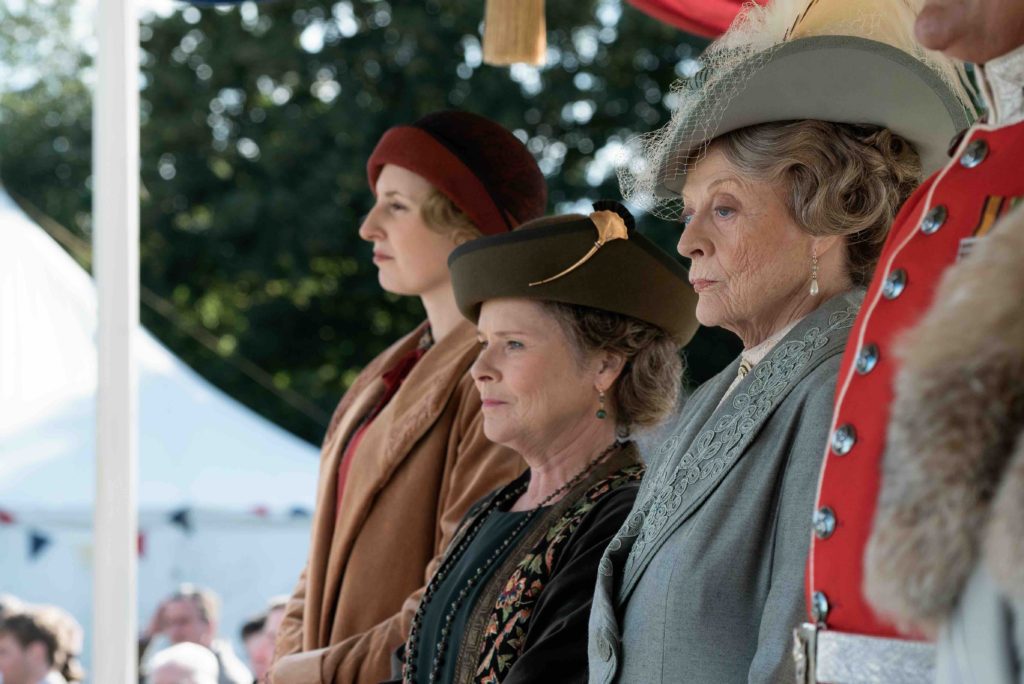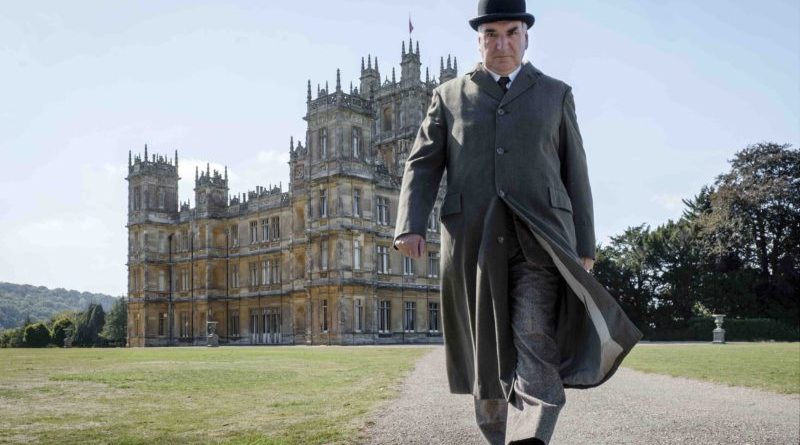INTERVIEW: Director of ‘Downton Abbey’ on the secrets of living upstairs, downstairs
Photo: Jim Carter stars as Charles Carson in Downton Abbey, a Focus Features release. Photo courtesy of Jaap Buitendijk / Focus Features / Provided by press site with permission.
The worldwide sensation Downton Abbey captured the hearts of TV viewers for six years, wrapping up its final season in 2015-2016. Fans of the show, which details life both upstairs and downstairs at an English country estate in the 1910s and 1920s, obviously wanted more from the Crawley family — ditto for the actors and series creator, Julian Fellowes.
Well, Robert Crawley, Cora Crawley, Violet Crawley, Lady Mary, Lady Edith, Mrs. Hughes, Mr. Carson, Tom Branson and so many other beloved characters are back, but this time on the big screen. Downton Abbey the film is ready to be released in movie theaters Friday, Sept. 20.
When audience members last saw the Crawleys, peace had come over the family, who typically had a penchant for heartbreak and scandal. Lady Mary (Michelle Dockery) and Lady Edith (Laura Carmichael) had found love after terrible losses. Carson (Jim Carter) gave up butler duties to Mr. Barrow (Rob James-Collier), who still struggled being a gay man in the early part of the 20th century. This decision to retire gave Carson more time at home with his wife, Mrs. Hughes (Phyllis Logan).
Violet Crawley (Maggie Smith) still had subversive, yet dignified one-liners for her cousin, Isobel Crawley (Penelope Wilton). Mr. Bates (Brendan Coyle) and Anna (Joanne Froggatt) were still working in the house and enjoying married life, despite many unfortunate prior circumstances. Mrs. Patmore cooked up a storm, while Mr. Moseley (Kevin Doyle) still couldn’t cut a break.
All was well with the family and workers of Downton after six seasons on ITV and PBS. Now, it’s time for a royal visit. In the new movie, King George V (Simon Jones) and Queen Mary (Geraldine James) visit Downton Abbey, bringing along with them their own team of servants, which almost immediately runs afoul of the hard-working staff at the abbey. Imelda Staunton plays the crucial new character of Maud Bagshaw, someone who the Dowager Countess would like to interrogate very much.

At the helm of this epic period piece is director Michael Engler, who directed a few episodes of the original TV series. He is also known for The Big C, Sex and the City and Six Feet Under, among many other projects.
“You know, the truth is there weren’t that many big differences,” Engler said in a recent phone interview about the transition from shooting the TV show to the movie. “There were a lot of little differences, but the biggest was probably the fact that the scale of production was bigger because the event of the king and queen’s visit created [this] pageant, the parade, the review of the troops. … It created more big-scale events. Probably in the past anything like that that might have been going on, you would have seen a corner of it. In the film, you see the whole thing fully presented.”
Engler also said the movie, which runs approximately two hours, didn’t have the luxury of multiple episodes to introduce, develop and finish numerous storylines. All of the threads in this Downton Abbey fabric needed to connect to one large storyline within a manageable running time.
“It had to feel like its own complete standalone event,” he said. “A lot of it had to do with just knowing that the scale of it was going to be so much bigger, and people would be able to see more into it the amount of detail.”
The costume department, for example, wanted every single aspect of every single outfit to be planned and perfect. The same can be said for the scenic designers, who were working with similar sets from the TV show, but alterations were made. One example: the ladies’ bedrooms. The movie features the same furniture and walls as the series, but they were rebuilt and enhanced. One wall was painted green for the TV show, while the movie uses cut-out green velvet.
“So you felt as though you were seeing the same thing, but now you were seeing into it with richer detail and more splendor,” Engler said. “Everything felt a little more deluxe.”

The director admitted that the cast and crew had some nervousness when they got back on set. It had been three years since they made an episode, so they weren’t certain the magic could be found again. Luckily, within minutes, the family came together and discovered they knew exactly what they were doing.
“There’s lots of new things to learn and figure out, but the basics of what that world is and how it functions … everybody kind of fell back into those old processes very naturally,” he said.
One of the most challenging scenes in the new movie involves a dramatic sequence in the rain. It’s one of the most visceral examples in Downton Abbey history when the family upstairs and the servants downstairs come together, with a bit of elbow grease, for a common goal.
“It’s one of those things that you spend a lot of time setting up all the technical things, setting up the big rain rig, setting up the lights so that they catch the rain in just the right way, getting the actors so that they’re dressed so that underneath they don’t get wet even though their clothes on the outside are soaking,” the filmmaker said. “It’s funny, it takes a long time to get all those technical elements set up and aligned and everybody ready to go, and then sometimes I find with things like that, where the actors are thrown into something with a stimulus upon them that is so intense, that the acting is just very natural. You just naturally are running around, shouting at each other, trying to get these things done, and so the funny thing was the actual shooting of it wasn’t that complicated.”
Engler appreciated that the gang was getting back together again, but there were also new people to welcome into the family. Staunton is actually the real-life wife of Carter, who plays Carson on the show, so she knew the set very well. Kate Phillips, who plays Princess Mary, also joined the cast, and her character has a revealing scene with Tom Branson (Allen Leech), the widowed husband of Lady Sybil, the youngest daughter of the Crawleys.
“There was this idea that there was plenty that was familiar and that felt like a homecoming, and then there was a lot that was new — new people to challenge each other,” the director said. “First of all, the Downton acting company is an incredibly generous, spirited one, so they really go out of their way when new people are coming in. I was amazed that even people like Imelda Staunton on her first day assumed that, being the new kid in school, that she would have to somehow … figure out her space in it and her role in it. I think for her in some ways it kind of worked very well for the storyline because her character comes into the world nervous about how it’s all going to go. I think in some ways that was a useful thing for her.”
Engler is an American, which made for an interesting adventure interpreting this British period piece. His focus was often on the universal themes of Downton Abbey, which no doubt have attracted the adulation of audiences in various countries and cultures. The show and movie may be centered on life in England in the 1910s and 1920s, but there’s a real connection to the lives of these people and how they speak to important issues that continue to impact the world — issues like feminism, LGBT rights, class, marriage, discrimination, privilege, sexual assault, inheritance, family, love, loss, redemption and conflict.
“I have learned a lot,” Engler admitted. “So much of why I think it’s so popular worldwide is how universal it is. I also think [about] the particular structures of etiquette and manners and protocol and order, the order of the world and how people find their place in it. While on the one hand, obviously we don’t want to go back to that or to an antiquated hierarchical system where certain people are always born to a certain position, whether it’s above stairs or below stairs, and chances are it won’t change, or there’s a natural resistance for it to ever change — that I don’t think we want. But I do think there’s something that people find very meaningful and kind of nowadays a little bit soothing in the idea of a group of people who are nothing like each other and have very different needs and very different skills, very different backgrounds, all feeling like they’re part of something together, that they’re invested in something together. And they’re invested in each other.”
He added: “And, you know, what’s funny I did think as an American going in with this feeling that, oh, that system it’s just so awful and it’s so unfair and it’s so undemocratic and all of that. I began to sort of see into the human aspect of it, that it is kind of ennobling in some ways and allows people to shine and to communicate who they are.”

Engler had to direct a large ensemble of talented actors, but no one would disagree that Maggie Smith, a two-time Oscar winner, is in a stratosphere unto herself. She won a Golden Globe and three Emmy Awards for her Dowager role, and her line delivery is something to behold. She is the epitome of sardonic wit and unapologetic upper-class snobbery, yet there’s an authentic humanity and genuine love for her family under the surface.
One might think Engler is unable to direct an actor of such esteem, but that’s the wrong assumption.
“Do you know what the funny thing is, and I’ve been surprised by it my whole career, is that so many of the best actors around and my favorite to work with love to be directed,” he said. “In a funny way if you don’t direct Maggie, she gets very irritable because she’s so curious about the whole thing. She’s so invested in the whole story that she wants to know that somebody is really watching in a very intricate way and responding to what she’s doing and giving her other possibilities to think about and reminding her of exactly where she is in the story.”
He added: “The funny thing is she comes in with so much that it’s not like you’re directing her in the sense of helping her to figure out what it is. It’s more like, oh, you know what I think, let’s do one where we feel she knows more, or do a take where we feel she’s just figuring it out. … Even though she makes brilliant choices, she’s aware that it’s not the only one you could make.”
By John Soltes / Publisher / John@HollywoodSoapbox.com
Downton Abbey, directed by Michael Engler, opens Friday, Sept. 20. Click here for more information.

